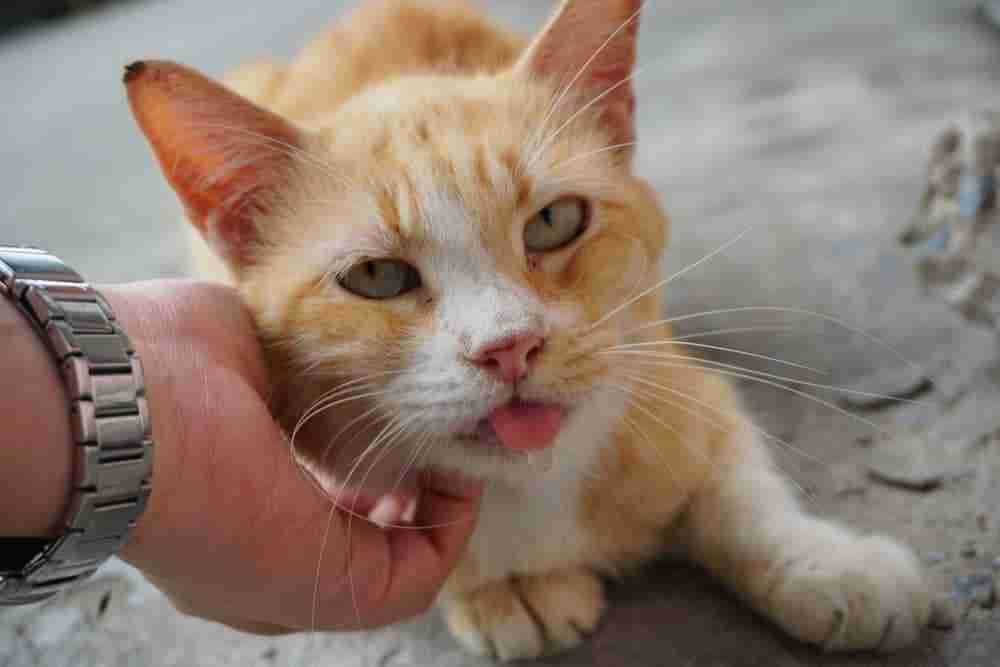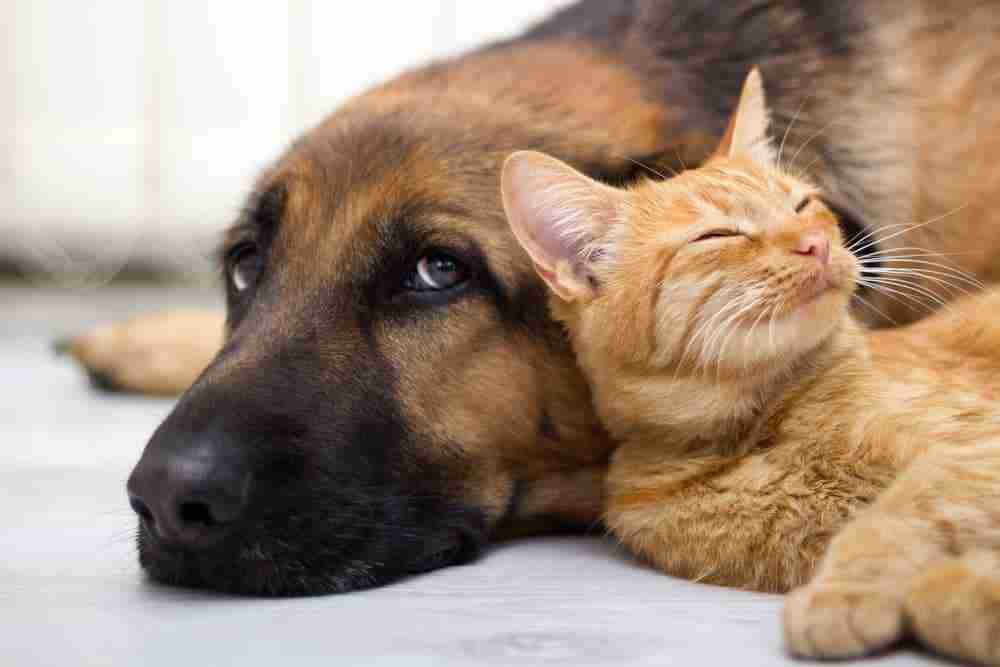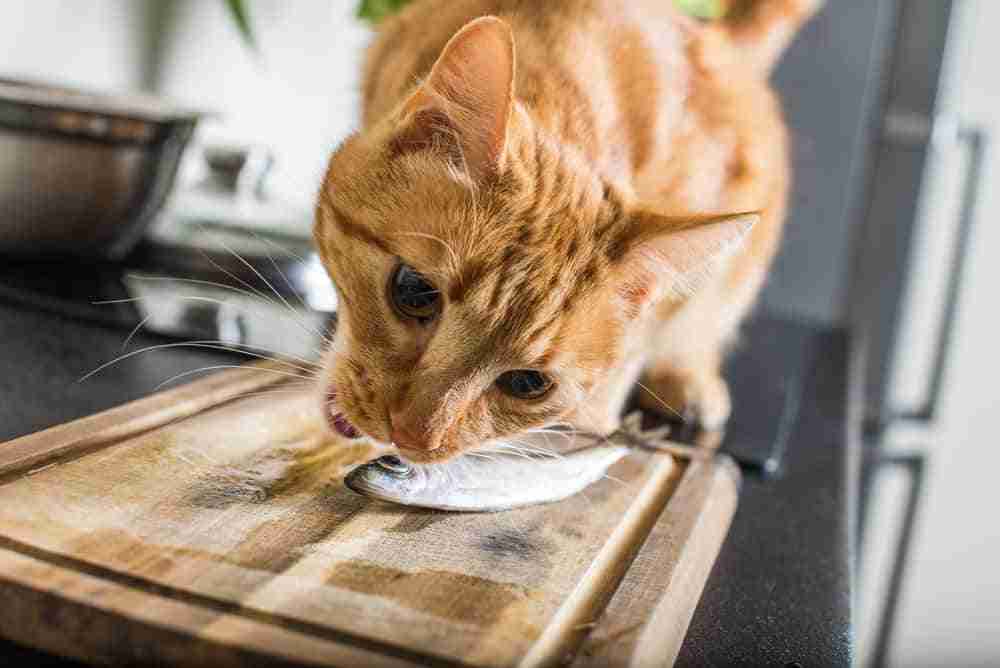Do you have an orange tabby? These kitties have a reputation for their mottled coats with tabby patterns that look amazing. They also have a reputation for being affectionate. Is this reputation justified and if so, why are orange tabby cats so affectionate compared to other cats?
Orange cats are always tabbies but tabbies are not always orange! Tabbies typically feature other colors like grey and white. The orange-look of a tabby cat makes it one of the quintessential cat coat colors.
From the Cheshire Cat in Alice in Wonderland to the hilarious antics of Garfield, tabby cats are the choice of popular culture.
Tabby cats come in a range of color patterns. With freckled noses and striped tails, they have a distinctive look that’s unlike any other feline.
Orange tabbies are also referred to as marmalade cats, ginger’s, apricot or red tabby’s, these cats have a reputation for being affectionate.
Why are orange tabby cats so affectionate, and why do they need more attention than other breeds? This article unpacks everything you need to know about the cuddly personality of your tabby.

What Does The Science Say?
Questions based on the coat color and sex of cats have been going on for some time. For instance, do male cats live longer than females, or do tabbies make better mousers than torties? Science has not directly addressed the question of whether orange tabby cats are more friendly than others but some of the studies to date may shed light on possible answers. Let’s look at what science has uncovered on the topic so far:
Male cats, in general, are slightly more friendly than female cats
A study conducted in 2015 asked 1400 cat guardians for their opinions on how their cats reacted when handled in three different scenarios. The broad finding was that female cats reacted more negatively than male cats. The result was further analyzed and it was found that when handled in three different settings the cats most likely to complain were female gray and white cats, female black and white cats or orange females, and calico females.
Orange cats are more likely to be male cats.
The gene linked to orange coat color is sex-linked meaning most orange cats are male. In fact, 80% of orange cats are male – making female orange tabby cats very rare!
Orange male cats are larger than male cats of other colors.
An Australian study and a French study have identified that orange male cats and generally bigger than male cats of other colors.
Larger cats are found to be more aggressive
This study found that larger or heavier cats tend to be more aggressive toward other cats than smaller cats and are more likely to take part in riskier activities.
What we can infer from the science is that male cats, predominantly due to size, may have a larger appetite for risk than females and this may translate as a greater willingness to approach and be handled by people.
Orange tabbies tend to be male and larger than standard male cats, so they may appear to be predisposed to approach and be handled more than female cats of all colors and smaller males of all colors. This is just a theory based on conjecture about the actual science to date – it is not a theory based on quantifiable data.

Why Are Orange Tabby Cats So Affectionate?
While people state that tabbies are the most affectionate breed of cats, clearly there is no direct quantifiable data to support this other than owner claims and conjecture around the known science.
The real factors affecting your cat’s personality include the early spaying or neutering of your cat to stop its hormonal development and socializing kittens at an early enough age that they are familiar with people.
However, as the science shows, it seems that tabbies are more affectionate with their owners than calico or tortoiseshell cats.
The reality is no one knows what gives the tabby such an affectionate personality.
Is The Orange Tabby An Official Cat Breed?
One reason why no official research or evidence is surrounding the tabby’s stellar personality is that the tabby is not an official breed.
The “orange tabby” describes a color pattern, and this pattern can occur in many different breeds. The only breeds that can’t produce tabby coats are where the specified breed has a particular fur color, excluding the ginger cat. Check out some of these popular orange cat breeds.
Ginger cats have coats that come in different variations of patterns and colors. They also come on long-hair and shorthair breeds.

The most common breed of orange tabby is the domestic shorthair. However, tabby’s come in various breeds, from Persians to Maine Coons, and British shorthairs.
The most common type of orange tabby pattern is an apricot color fur with dark-orange stripes. However, there are plenty of other tabby variants across a wide range of breeds.
The light-orange tabby features apricot stripes contrasted against a cream-color undercoat. Along with the colors, the patterns in tabby’s also vary from cat to cat.
Some breeds create a specific pattern and color of their markings. However, there is plenty of variation in how the stripes appear on the cat.
The classic tabby look features a mottled swirl of contrasting colors of the cat’s entire coat. It’s common to find a white “bullseye” marking on either side of the cat’s flank.
The mackerel tabby comes with a coat featuring a tiger-striped effect. These stripes run down the length of their back and limbs.
The spotted tabby features stripes on their faces and a leopard-style spotting effect over the body. Regardless of the pattern, many tabbies feature a distinctive “M-shape” mark on their forehead and nose.
The eye color in tabby cats can vary, depending on the breed and genetics of the cat. Common colors for tabby eyes are blue, green, and amber hues. For orange tabby cats, the eyes tend to be golden through to deep amber in color. Some come with light green eyes but blue eye colors in adult orange tabby cats are a very rare cat eye color!
Some ginger cats come with golden-color eyes that replicate the same color as the stripes on their fur. These cats have a beautiful look, and they’re highly sought after by pet owners.

How Do Cats Develop Their Personality?
Cats come with individual personalities. However, certain breeds have specific characteristics not found in others. Cat-lovers around the globe are fond of attributing nature and character types to certain breeds.
While there is truth in some of the characteristics of cats, it’s important to note that each cat has an independent personality. Sometimes, the cat might not exhibit any of the typical personality traits of its breed.
The Calico has a reputation as the most playful breed, while tortoiseshells are temperamental. Speak to any cat lover, and they’ll tell you the orange tabby is the most affectionate.
However, that’s not always the case. A large part of your cat’s personality comes from how you treat them as kittens and while they grow up.
So, why do tabby cats appear more loving than other breeds? Well, it could be due to several factors. One of them being the other cats, they co-exist within the house.
If you own a tabby and a tortoiseshell, the tabby will seem like a gentle giant compared to the tortie. The tortoiseshell’s attitude could boost your impression of the tabby’s personality.
Socializing your cat at an early age is also vital to taming your cat’s wild instincts. The more you play with a young kitten and talk to it in a soothing voice, the calmer their personality as they mature.
Giving your cat as many positive interactions as possible ensures that they grow up as pleasant, friendly animals. Letting them play with children ensures that you have a well-adjusted cat and not one that decides to scratch your guests.
Another factor defining your tabby cat’s personality is its genetics. The X-Chromosome carries the orange coloration found in tabbies and ginger cats.
If the female cat has the gene, the other non-orange color genes on the male’s X-chromosome prevent the orange color from presenting in the cat’s fur.

However, male tabby cats with XY chromosomes only require one copy of the orange gene. As a result, more male cats have orange fur. The ratio of male to female tabby cats is around three-to-one.
Some cat owners, as in the study mentioned earlier, believe that female cats are less affectionate than males. Since tabbies are more likely to be male, they might give the impression that they are a calm and loving breed.
The most significant factors in your cat’s personality come from how you treat it at an early age. Playing and caring for your kitten is vital to growing up with a friendly nature.
It’s important that kittens don’t experience removal from their mothers prematurely. After taking your cat home, you need to make plans to neuter or spay them around the eight-week mark.
Cats with excellent living conditions and a loving family are always more friendly than cats that feel insecure or bored. Most cats also get along with dogs, and raising your feline alongside your canine is a great way to improve both pets’ socialization.
Are Orange Tabby Cats Clingy?
Orange tabby cats are not known to be clingy cats by nature. In fact, most cats are not clingy by nature. Why is my cat clingy? Most likely because it has undergone a sudden change of routine, has an illness, may be bored, hungry, or is simply aging. Rescue cats may suffer from clingy behavior due to changes in homes and environments. Cats separated from mothers at too early an age might also suffer from clingy behavior.
Clingy behavior is not commonly associated with cat color! It is likely that if you have an orange cat that exhibits clingy behavior the behavior is a result of some other factor rather than their coat color or pattern. If you have an orange cat that is exhibiting clingy behavior you can often overcome these behaviors with time and develop your cat into a perfectly balanced feline.
Tips for Selecting A Friendly Kitten
It’s challenging to assess a kitten’s personality. The kitty has so much growing to do, with their whole life in front of them. Looking at the mother’s attitude can help, but it’s not a guarantee that your kitten’s personality will be the same.
If you’re taking on a rescue, you have no idea of the cat’s emotional and mental state. Often cats in shelters come from abused homes, or they experience severe neglect.
These life experiences shape the cat’s personality, just like it would in a human being. Emotionally broken cats are hard to get along with at home. You might feel like you’re doing a good deed picking up a rescue, but most of the time, it ends in disaster.
The best idea is to buy your kitten from a reputable breeder. A good breeder won’t remove the kittens from their mother until they are at least 12-weeks old. They also ensure you’re getting good genetics and not a street special with unknown origins.
